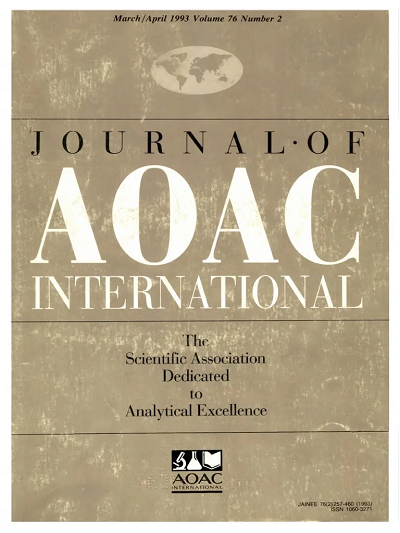Relevance of Secondary Enrichment in the Detection of Salmonella Spp in Food Samples by qPCR according to DIN 10135
IF 1.7
4区 农林科学
Q3 CHEMISTRY, ANALYTICAL
引用次数: 0
Abstract
Background When detecting Salmonella spp. in food samples, unlike with culture-based procedures where there are solid standards, PCR techniques are generally dominated by commercial solutions, often backed by the conformity of reference organizations, and based on rigorous validation studies. The few independent standards that exist are not subject to revision and improvement to the same extent as the manufacturer's methods. Moreover, since commercial networks do not promote them, they are less implemented in everyday practice. The German standard DIN 10135 is an example of this. In this method, before PCR detection, a primary enrichment (16–20 h) followed by a secondary selective enrichment of at least 6 hours is needed. Nevertheless, it allows the possibility of only apply the first step if evidence of their correct operation is provided. Objective To evaluate how necessary is the secondary enrichment for DIN 10135 standard. Methods Short and complete enrichment steps were compared in the context of the evaluation of the limit of detection for 11 types of food. Additionally, a blind assay was performed with 75 food samples. Results The data show that a simple primary enrichment may be sufficient and that the second selective enrichment with the tested matrices would not be strictly essential. The blind study obtained a 98.6% of trueness and precision of 100%. Conclusions At least for the end consumer products, a secondary enrichment of 6 hours is not necessary for all the products tested. Highlights In the context of the DIN 10135 standard, the primary enrichment (16–20 h, 37 ± 1 °C) can be enough for detecting Salmonella spp.根据 DIN 10135 标准通过 qPCR 检测食品样品中沙门氏菌属时二次富集的相关性
背景 在检测食品样本中的沙门氏菌时,与有可靠标准的培养基程序不同,PCR 技术通常以商业解决方案为主,这些解决方案通常有参考组织的一致性支持,并以严格的验证研究为基础。现有的少数几个独立标准并不像制造商的方法那样需要修订和改进。此外,由于商业网络并不推广这些标准,它们在日常实践中的应用也较少。德国 DIN 10135 标准就是一个例子。在这种方法中,在 PCR 检测之前,需要先进行一次富集(16-20 小时),然后再进行至少 6 小时的二次选择性富集。不过,如果能提供正确操作的证据,也可以只进行第一步。目标 评估根据 DIN 10135 标准进行二次富集的必要性。方法 在对 11 种食品的检测限进行评估时,对短时间富集步骤和完全富集步骤进行比较。此外,还对 75 种食品样品进行了盲测。结果 数据显示,简单的初级富集可能就足够了,用被测基质进行第二次选择性富集并非绝对必要。盲法研究的真实度为 98.6%,精确度为 100%。结论 至少对于最终消费品来说,所有受测产品都没有必要进行 6 小时的二次富集。要点 根据 DIN 10135 标准,初级富集(16-20 小时,37 ± 1 °C)足以检测沙门氏菌属。
本文章由计算机程序翻译,如有差异,请以英文原文为准。
求助全文
约1分钟内获得全文
求助全文
来源期刊

Journal of AOAC International
医学-分析化学
CiteScore
3.10
自引率
12.50%
发文量
144
审稿时长
2.7 months
期刊介绍:
The Journal of AOAC INTERNATIONAL publishes the latest in basic and applied research in analytical sciences related to foods, drugs, agriculture, the environment, and more. The Journal is the method researchers'' forum for exchanging information and keeping informed of new technology and techniques pertinent to regulatory agencies and regulated industries.
 求助内容:
求助内容: 应助结果提醒方式:
应助结果提醒方式:


